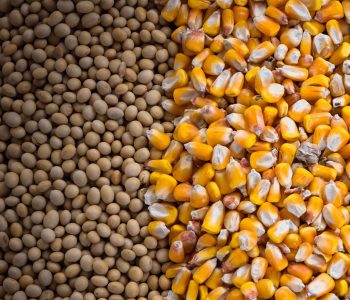The use of exogenous enzymes in monogastric nutrition requires special consideration:
Currently phytase is considered as a broadly used enzyme in animal production. This is partly due to its well known benefits: as it helps to release phosphorus contained in animal diets, which without the use of this enzyme would remain unavailable. Therefore, the use of phytase contributes to lowering inorganic phosphorus inclusion in diets, which in turn reduces phosphorus excretion into the environment.
Carbohydrases, which will be the main topic addressed in this article, are enzymes that have gained great notoriety lately. This is growing interest in these enzymes, is related to their ability to degrade complex carbohydrates found in grains.
The search for alternatives that contribute to reducing the cost of feed without compromising performance in animal nutrition is a major priority. Thus, the use of exogenous enzymes in diets containing alternative grains, such as: wheat, oats, barley and rice bran,has become a well established practice. As this nutritional strategy contributes to improving feed digestibility, while minimizing antinutritional effects and favoring productive parameters.
These feedstuffs have a high concentration of non-starch polysaccharides, which are components of the cell wall of vegetables, which cannot be fully degraded by animal’s endogenous enzymes. This affects the digestibility of this type of ingredients and causes changes in the digestive tract’s viscosity.
Keep up to date with our newsletters
Receive the magazine for free in digital version
REGISTRATION
ACCESS
YOUR ACCOUNT
LOGIN
Lost your password?
